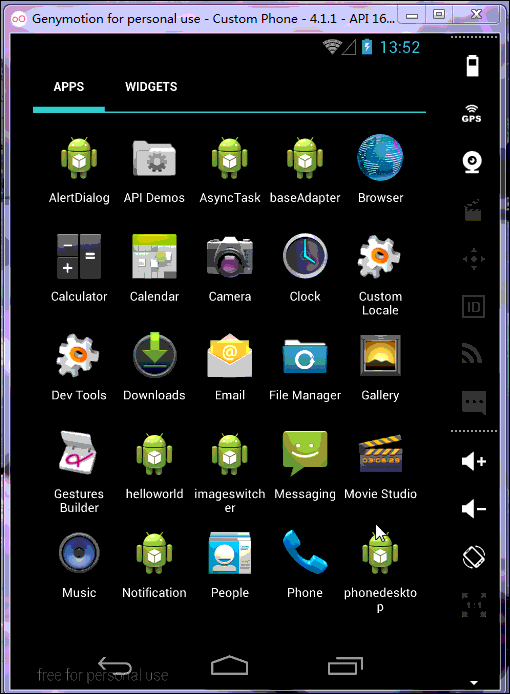在使用手机时,当有未接来电或者新短消息时,手机会给出响应的提示信息,这些提示信息通常会显示到手机屏幕的状态栏上。
Android也提供了用于处理这些信息的类,它们是Notification和NotificationManager。其中,Notification代表的是具有全局效果的通知,而NotificationManager则是用于发送Notification通知的系统服务。
使用Notification和NotificationManager类发送和显示通知也比较简单,大致可以分为以下四个步骤
(1)调用getSystemService() 方法获取系统的NotificationManager服务
(2)创建一个Notification对象,并为其设置各种属性
(3)为Notification对象设置事件信息
(4)通过NotificationManager类的notify()方法发送Notification通知
下面通过一个实例说明和使用Notification在状态栏上显示通知
国际惯例
运行结果:
布局文件就不发了 线性垂直布局 两个按钮
MainActivity.class
package com.example.notification;import android.os.Bundle;import android.app.Activity;import android.app.Notification;import android.app.Notification.Builder;import android.app.NotificationManager;import android.app.PendingIntent;import android.content.Context;import android.content.Intent;import android.view.View;import android.view.View.OnClickListener;import android.widget.Button;public class MainActivity extends Activity implements OnClickListener{ private NotificationManager manager; private Button button1; private Button button2; private int Notification_ID; @Override protected void onCreate(Bundle savedInstanceState) { super.onCreate(savedInstanceState); setContentView(R.layout.activity_main); manager=(NotificationManager) getSystemService(Context.NOTIFICATION_SERVICE); button1=(Button) findViewById(R.id.button1); button2=(Button) findViewById(R.id.button2); button1.setOnClickListener(this); button2.setOnClickListener(this); } @Override public void onClick(View v) { // TODO Auto-generated method stub switch(v.getId()){ case R.id.button1:{ showNotification(); break; } case R.id.button2:{ manager.cancel(Notification_ID); break; } } } private void showNotification() { // TODO Auto-generated method stub Notification.Builder builder=new Builder(this); builder.setSmallIcon(R.drawable.ic_launcher);//设置图标 builder.setTicker("通知来啦");//手机状态栏的提示 builder.setContentTitle("我是通知标题");//设置标题 builder.setContentText("我是通知内容");//设置通知内容 builder.setWhen(System.currentTimeMillis());//设置通知时间 Intent intent=new Intent(this,MainActivity.class); PendingIntent pendingIntent=PendingIntent.getActivity(this, 0, intent, 0); builder.setContentIntent(pendingIntent);//点击后的意图 builder.setDefaults(Notification.DEFAULT_LIGHTS);//设置指示灯 builder.setDefaults(Notification.DEFAULT_SOUND);//设置提示声音 builder.setDefaults(Notification.DEFAULT_VIBRATE);//设置震动 Notification notification=builder.build();//4.1以上,以下要用getNotification() manager.notify(Notification_ID, notification); }}上面代码中设置的指示灯和震动,由于程序中要访问系统的指示灯和振动器 所以要在AndroidManifest.xml中声明使用权限
<uses-permission android:name="android.permission.VIBRATE" /> <uses-permission android:name="android.permission.FLASHLIGHT" />
希望对你有所帮助。渣渣学习中....
- 1楼cnwutianhao3天前 16:55
- 很早就有人,发这个教程,你这个是什么鬼,还原创?这位大神2012年就发表了 http://blog.csdn.net/zhuangxujun/article/details/7196390
- Re: su201451040093天前 17:06
- 回复cnwutianhaon我不知道你是怎么想的,我相信如果你在百度搜索notification状态栏通知,会更多,大家都是在书本上学习的知识 为什么别能比我提前写了 而我再写就是抄袭吗?这样想的话 原创只有写书的那个人。你是这样理解的吗